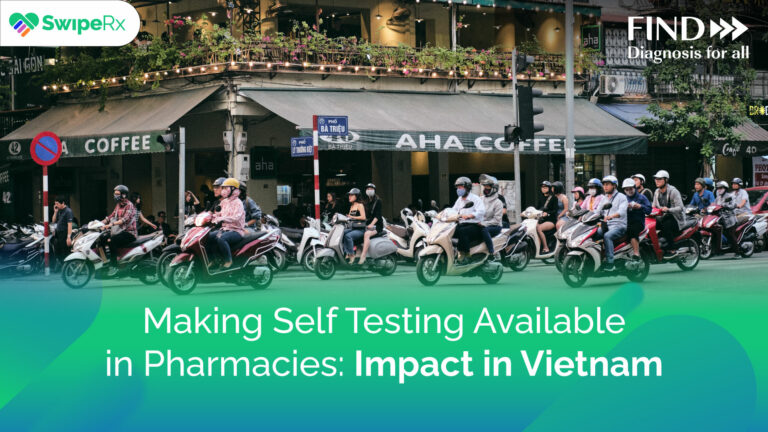Innovative health technologies improve patient care and deliver cost savings
Healthcare, a data-rich sector generating vast amounts of patient information daily, is an obvious target for artificial intelligence (AI). The potential role of AI in healthcare is made all the more compelling by the need for accurate and rapid decision-making, and chronic shortages of human healthcare resources.
Accenture predicts the global AI market will grow by 40% a year through to 2021( 1 ).
Making human doctors obsolete
Go to source
The Asia Pacific AI healthcare market was valued at US$149 million in 2018 ( 2 ) , its rapid expansion driven by the accelerating adoption of AI across a widening number of applications (see box below). Overall, AI promises to improve the accuracy of diagnoses and treatments, raise operational efficiency, and deliver better patient care.
Healthcare Artificial Intelligence Market Share Growth Report 2019–25 (2019)
Go to source
- AI in Healthcare: 10 Most Promising Applications
- Medical Record Management System – AI extracts and indexes efficiently and models predict high-risk conditions providing decision support
- Health Monitoring – data from wearables are analyzed for a holistic health check
- Digital Consultation – AI-enabled bots read patient symptoms and suggest a diagnosis
- Precision Medicine & Patient Data Analytics – AI genetic scans spot early symptoms and disease risks and predicts health issues
- Triage – AI is used to categorize patients based on need and urgency
- Image Diagnosis – the analysis of X-rays, CT scans is much faster and more accurate using AI
- Virtual Nurses – AI can help to monitor patients’ health, following up on their medication or treatment (this could equally apply to pharmacy professionals)
- Dosage Error Reduction – AI holds promise for improving accuracy in, and thereby the reducing costs of, medication tasks
- Fraud detection and cybersecurity
- Hospital Efficiency – AI helps healthcare institutions reduce back-office costs and cut the time that HCPs spend on non-patient-care activities
Southeast Asia AI activity
Southeast Asia is at the forefront of AI healthcare innovation, as growing demand for medical services coincides with a surge in healthtech start-ups and investment. Adding to the AI impetus, countries in the region are struggling with shortages of HCPs amid rising demand for better healthcare. Southeast Asia is well below the global average on several healthcare metrics: ASEAN’s five largest countries by population have an average of only 0.8 doctors per 1,000 people, well below the world average of 1.5. ( 3 ). This explains the typical patient experience in many Southeast Asian countries, one of long waiting times and sub-standard levels of personal care.
World Bank data
Go to source
Innovative healthcare solutions using AI and machine learning technologies can help bridge these healthcare resource gaps and meet the rising healthcare expectations in Southeast Asia. Healthcare providers across the region are very aware of the benefits of incorporating AI solutions in their hospitals, clinics and pharmacies.
INDONESIA – Early detection
Indonesian start-up CekMata uses AI and machine learning for early detection of cataracts. Users simply upload a close-up of their eyes, and the system detects any sign of infection. If it finds an anomaly, the system directs the user to the nearest ophthalmologist or hospital ( 4 ).
The CekMata platform
Go to source
THAILAND – Treatment planning
Bumrungrad International Hospital has integrated IBM Watson supercomputer analytics into its oncology department. The supercomputer advises doctors on best treatment plans for cancer patients based on the patient clinical data, existing medical literature, and past clinical cases ( 5 ).
The rise of digital healthcare
Go to source
PHILIPPINES – Triage
Lifetrack Medical Systems, a Singapore and Philippines-based healthtech start-up is using AI to triage potential COVID-19 patients, helping radiologists and researchers using chest CT scans to identify potential COVID-19 cases faster and earlier and then assign appropriate treatment ( 6 ).
Lifetrack Medical Systems launches free COVID-19 remote triaging via CT scans with PH Antique province
Go to source
MALAYSIA – Assistive diagnostics
Skymind Holdings, a leading AI ecosystem builder, developed an AI-based tool for Hospital Tunku Azizah Kuala Lumpur to advance the adoption of analytics and artificial intelligence (AI) in clinical and healthcare research in Malaysia ( 7 ).
Assistive diagnostic AI tool to tackle COVID-19 in Malaysia
Go to source
Singapore is actively seeking to embed AI technologies in its healthcare system and also nurture and support AI healthcare technology start-ups. Based on a recent survey by Royal Philips, 28% of Singapore HCPs already use AI technologies to improve diagnostic accuracy, ranking third globally (15 countries surveyed), behind China (45%) and Saudi Arabia (34%) ( 8 ).
Future Health Index 2019 Report (Royal Philip)
Go to source
SINGAPORE – Smart hospital wards
Coming soon in Singapore are smart wards manned by assistive robots, this according to Singapore’s technology agency for healthcare (IHiS). These robots could help patients with rehabilitation, which is very high-intensive and manpower-intensive. Separate, Tan Tock Seng hospital is using an “artificial brain” for bed assignment ( 9 ).
Exclusive: How Singapore Health uses AI to track its elderly care
Go to source
VIETNAM
A smart medical operating center using AI was launched in Ho Chi Minh City in Feb 2020. The pilot project updates information at 47 city hospitals, tracking their capacity to receive and treat patients ( 10 ).
Vietnam’s first smart medical center commences operation in Saigon
Go to source
Summary
Healthcare in Southeast Asia needs more AI innovation. Insufficient resources are available to meet the rising demand for more and higher quality healthcare access. Centers of AI healthcare excellence are springing up across the region.
Implications for Pharmacy Networks
AI can be an effective tool for pharmacists. Across the region, pharmacies function as an immediate primary care provider, a crucial link in the relationship between primary care physicians and patients. When deployed appropriately, AI technology empowers pharmacists to be more than just drug dispensers, enabling them to focus more on their role as primary care providers.
As AI lifts the administrative burden, how will automation and AI affect the demand for healthcare workers? If the example of Europe is any indicator, most healthcare occupations will be disrupted to some degree by AI adoption, at least according to the McKinsey Global Institute (MGI). However, MGI analysis suggests that automation will only partially alleviate Europe’s healthcare workforce shortage. For example, a 39% increase in all nursing occupations is expected by 2030 in Europe, even allowing for the fact that more than 10% of nursing activities will be freed up by automation. The chart below highlights the HCPs most likely to find their jobs disrupted by AI. Pharmacy technicians and pharmacists could eventually see a role for AI in dosage control and patient monitoring—but Asia’s low wage base will delay the technological transition. There is a growing consensus that AI will not displace human pharmacists but will instead serve as a value-adding tool for pharmacies.
Healthcare Occupations Most Disrupted by AI by 2030
(Selected European countries)
Source: McKinsey, 2020.
Summary
Most healthcare occupations will be disrupted by AI—including those of pharmacists and pharmacy technicians. But human interaction will remain essential as the roles of pharmacy HCPs evolve, starting with a greater emphasis on patient care services.








